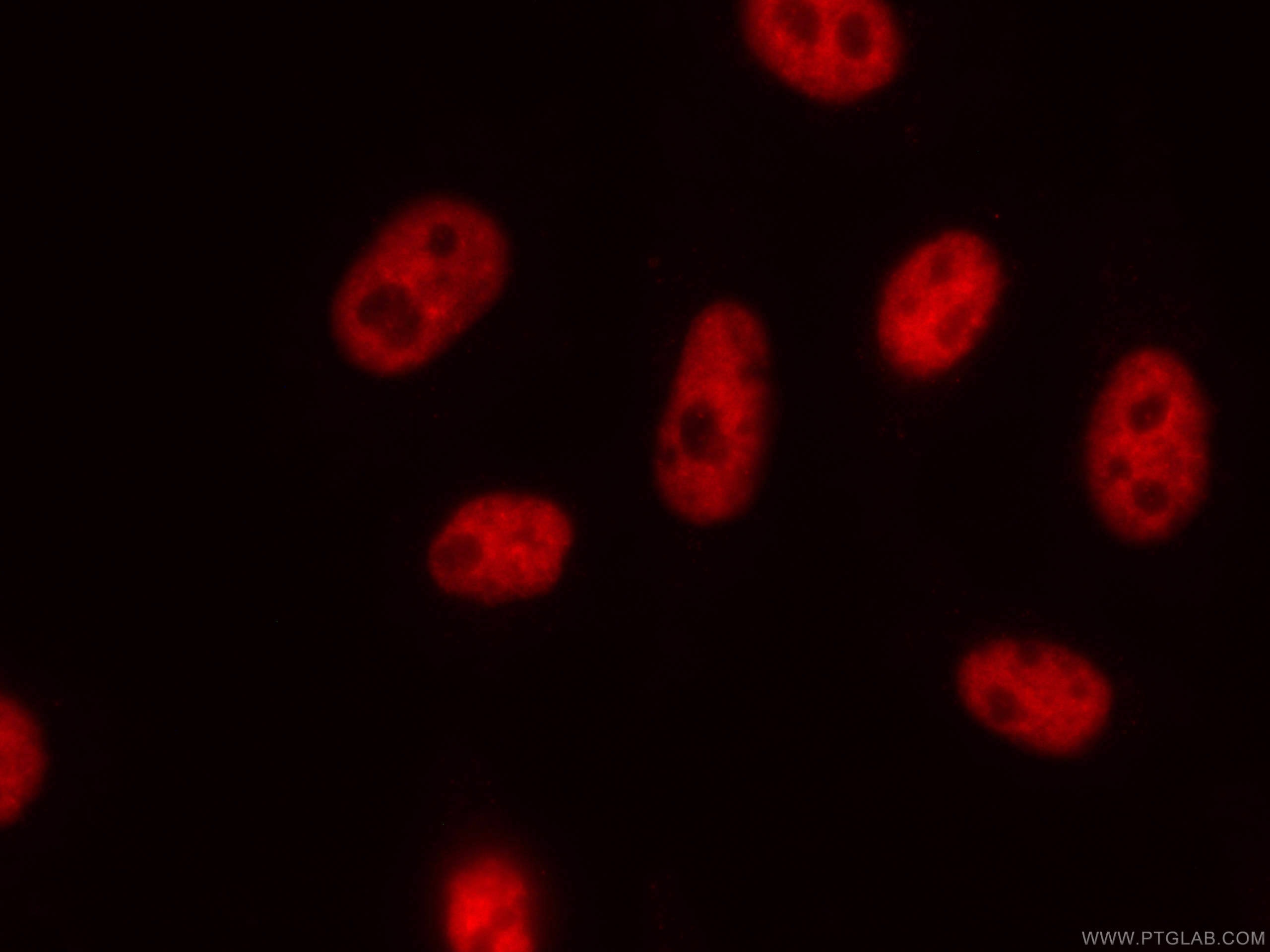Tested Applications
| Positive IF/ICC detected in | HepG2 cells |
Recommended dilution
| Application | Dilution |
|---|---|
| Immunofluorescence (IF)/ICC | IF/ICC : 1:50-1:500 |
| It is recommended that this reagent should be titrated in each testing system to obtain optimal results. | |
| Sample-dependent, Check data in validation data gallery. | |
Product Information
CL594-66335 targets NUDT21 in IF/ICC applications and shows reactivity with human, mouse samples.
| Tested Reactivity | human, mouse |
| Host / Isotype | Mouse / IgG1 |
| Class | Monoclonal |
| Type | Antibody |
| Immunogen |
CatNo: Ag12260 Product name: Recombinant human NUDT21 protein Source: e coli.-derived, PET28a Tag: 6*His Domain: 1-222 aa of BC001403 Sequence: MSVVPPNRSQTGWPRGVTQFGNKYIQQTKPLTLERTINLYPLTNYTFGTKEPLYEKDSSVAARFQRMREEFDKIGMRRTVEGVLIVHEHRLPHVLLLQLGTTFFKLPGGELNPGEDEVEGLKRLMTEILGRQDGVLQDWVIDDCIGNWWRPNFEPPQYPYIPAHITKPKEHKKLFLVQLQEKALFAVPKNYKLVAAPLFELYDNAPGYGPIISSLPQLLSRF Predict reactive species |
| Full Name | nudix (nucleoside diphosphate linked moiety X)-type motif 21 |
| Calculated Molecular Weight | 26 kDa |
| Observed Molecular Weight | 27 kDa |
| GenBank Accession Number | BC001403 |
| Gene Symbol | NUDT21 |
| Gene ID (NCBI) | 11051 |
| RRID | AB_2883561 |
| Conjugate | CoraLite®594 Fluorescent Dye |
| Excitation/Emission Maxima Wavelengths | 588 nm / 604 nm |
| Form | Liquid |
| Purification Method | Protein G purification |
| UNIPROT ID | O43809 |
| Storage Buffer | PBS with 50% glycerol, 0.05% Proclin300, 0.5% BSA, pH 7.3. |
| Storage Conditions | Store at -20°C. Avoid exposure to light. Stable for one year after shipment. Aliquoting is unnecessary for -20oC storage. |
Background Information
Cleavage and polyadenylation specific factor 5, 25 kDa (CPSF5, synonym: CFIM25) is one subunit of a cleavage factor required for 3' RNA cleavage and polyadenylation processing. The interaction of CPSF5 with the RNA is one of the earliest steps in the assembly of the 3' end processing complex and facilitates the recruitment of other processing factors.
Protocols
| Product Specific Protocols | |
|---|---|
| IF protocol for CL594 NUDT21 antibody CL594-66335 | Download protocol |
| Standard Protocols | |
|---|---|
| Click here to view our Standard Protocols |




